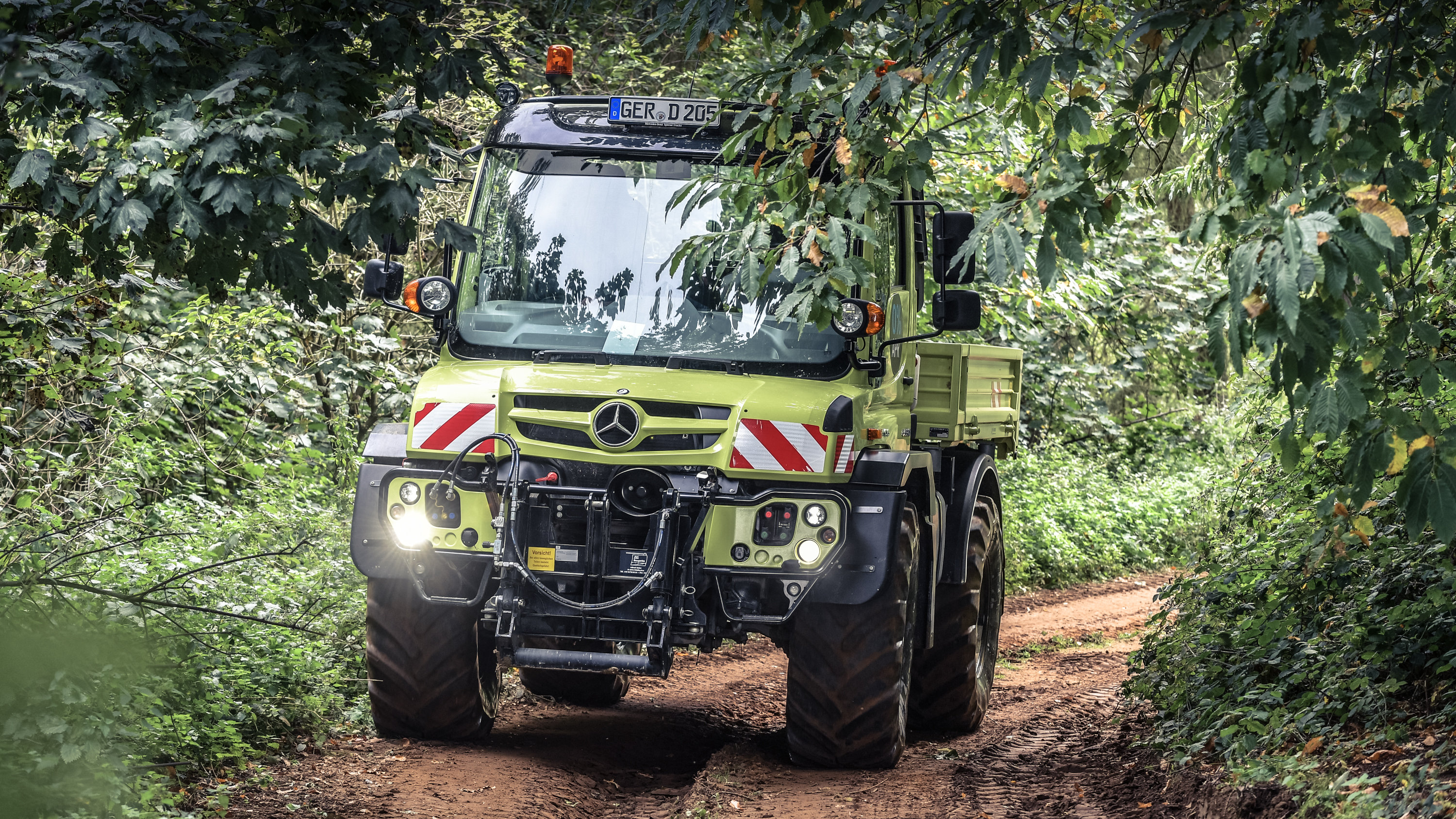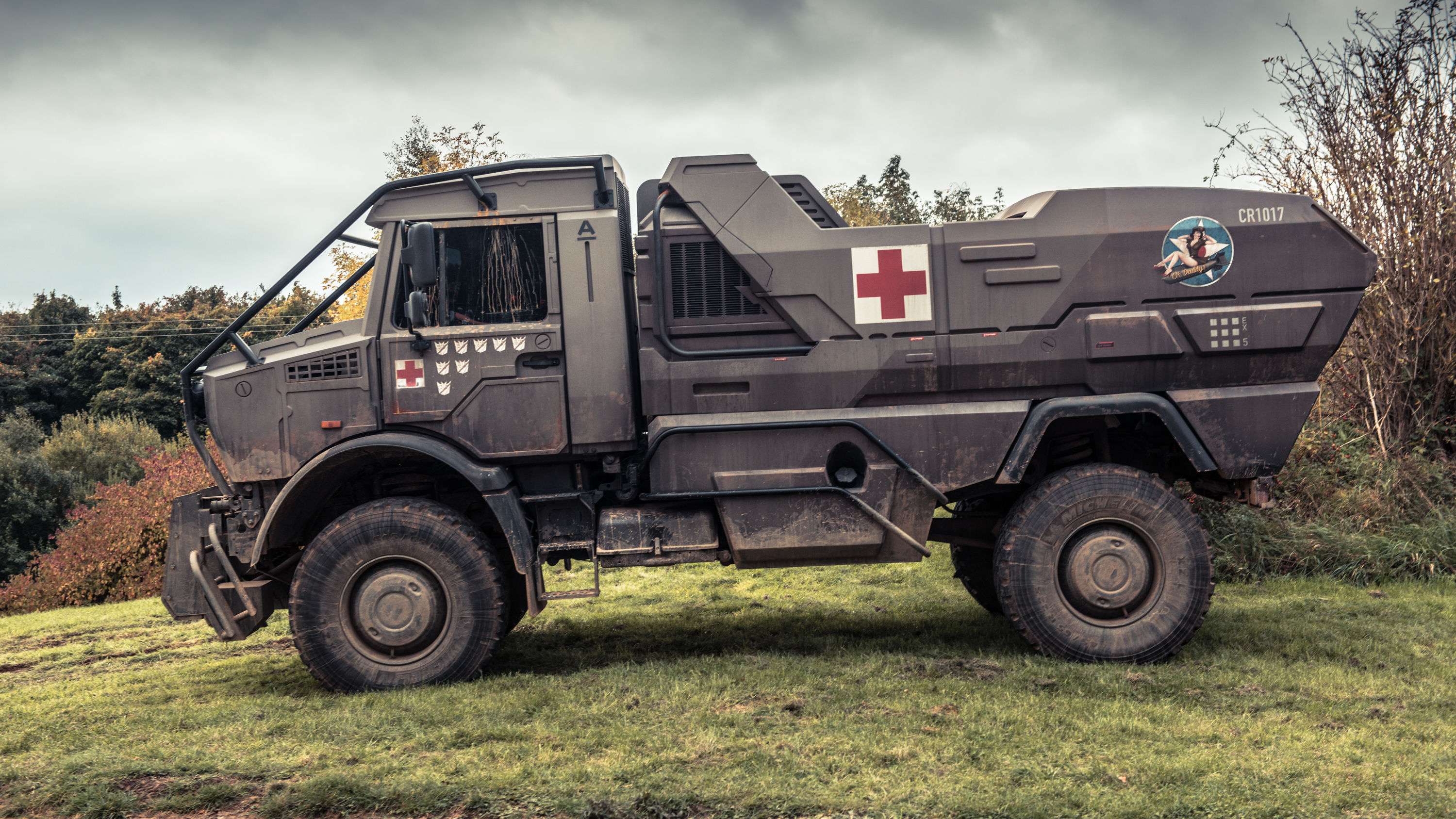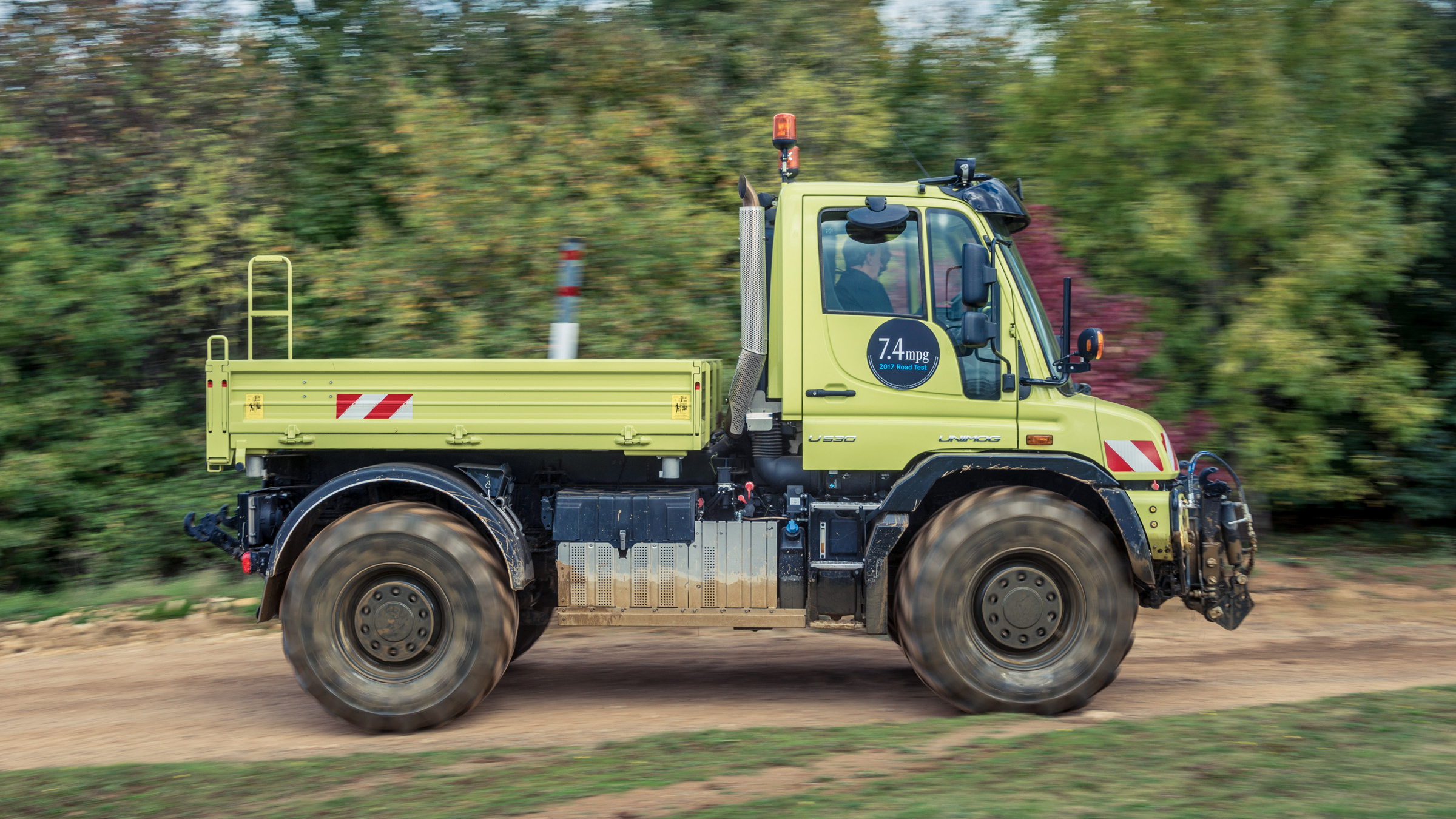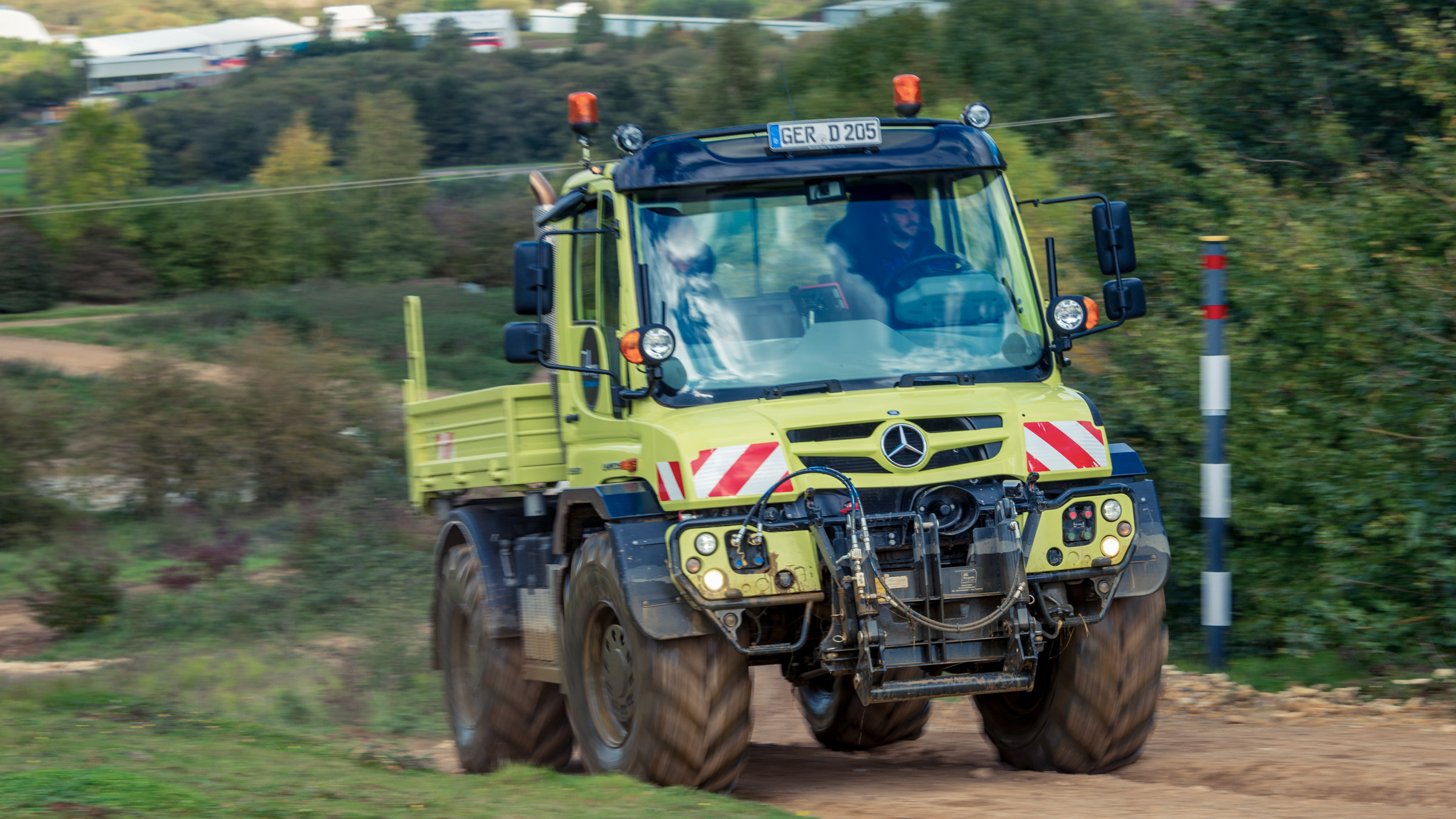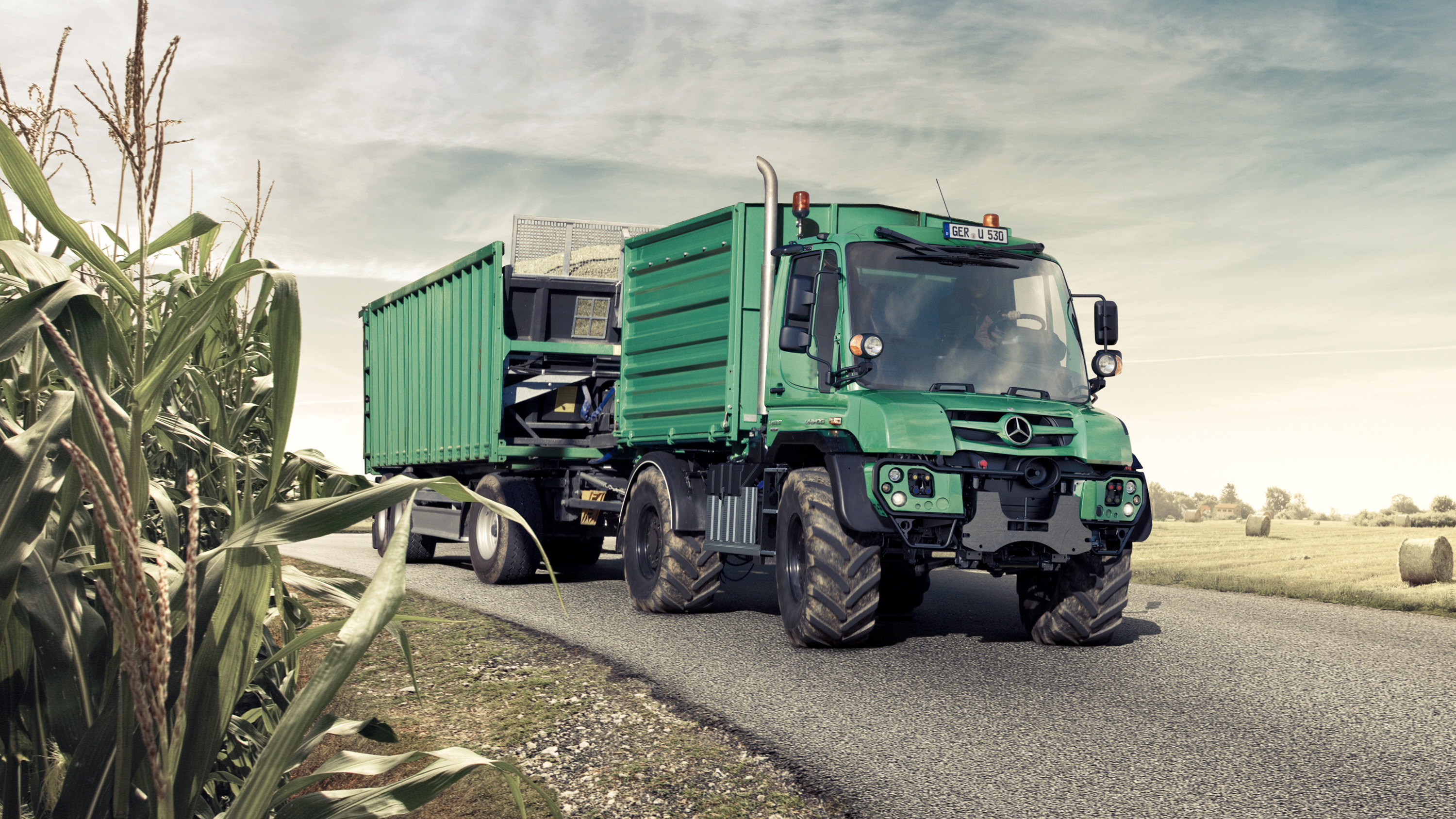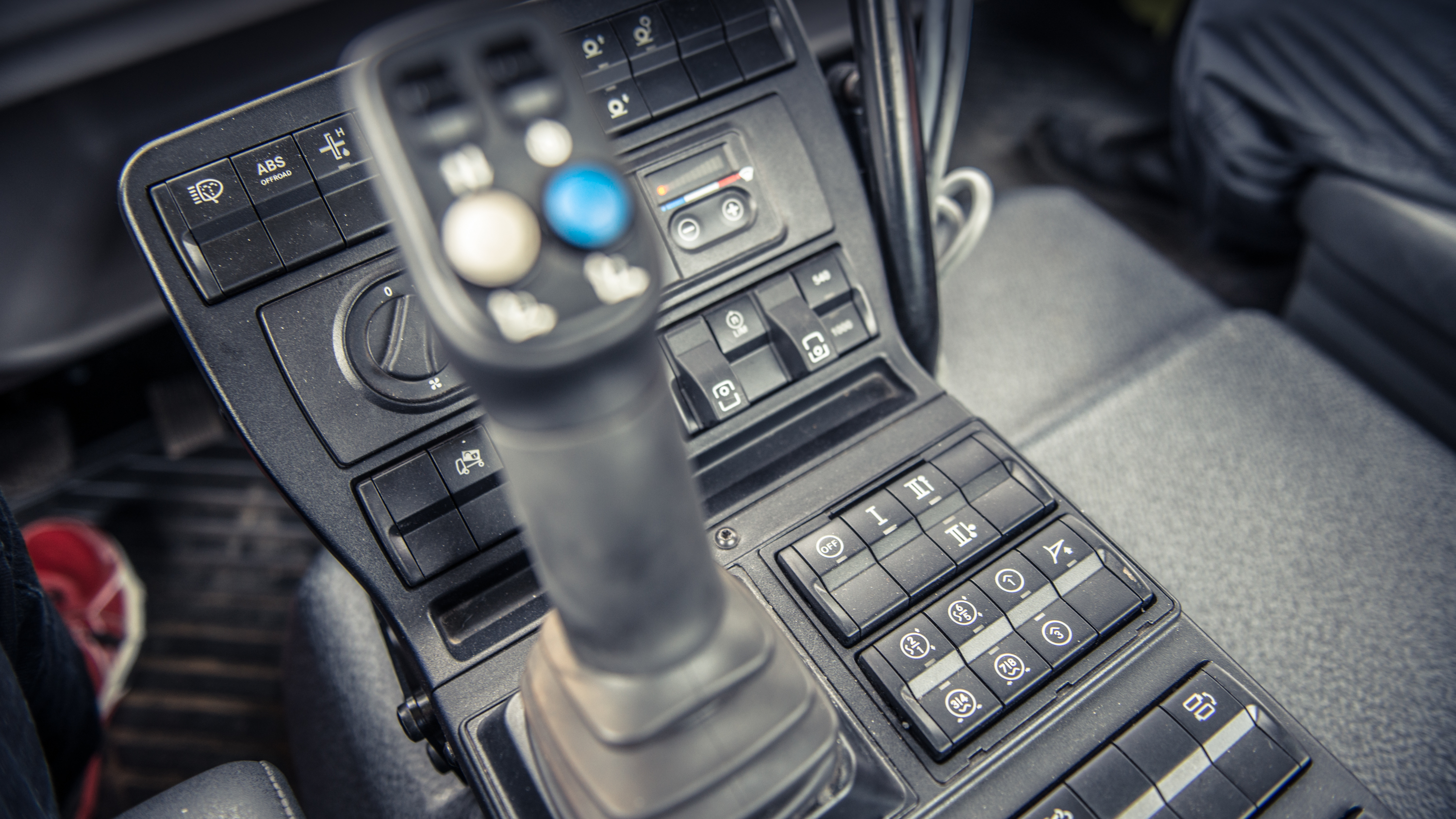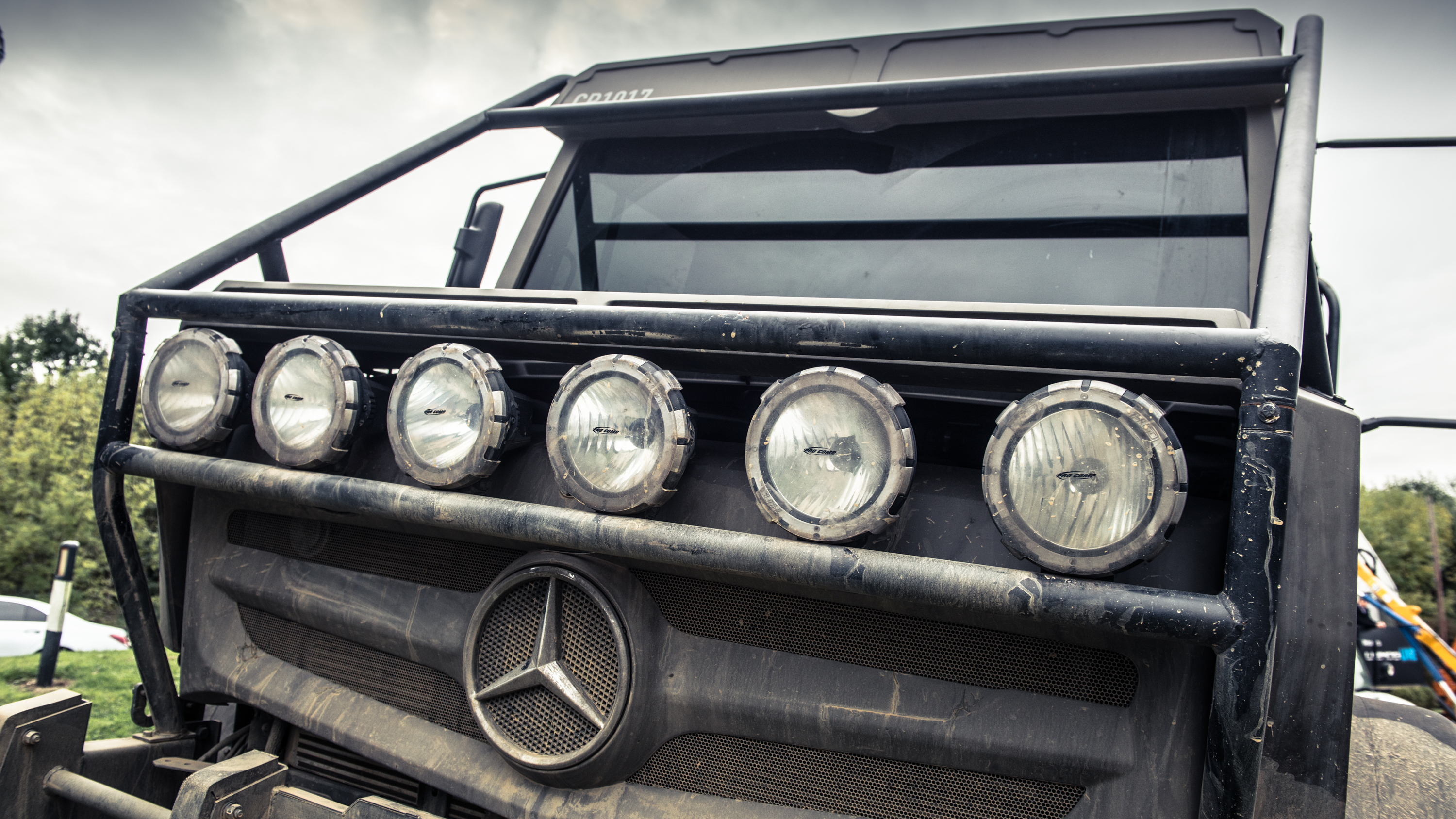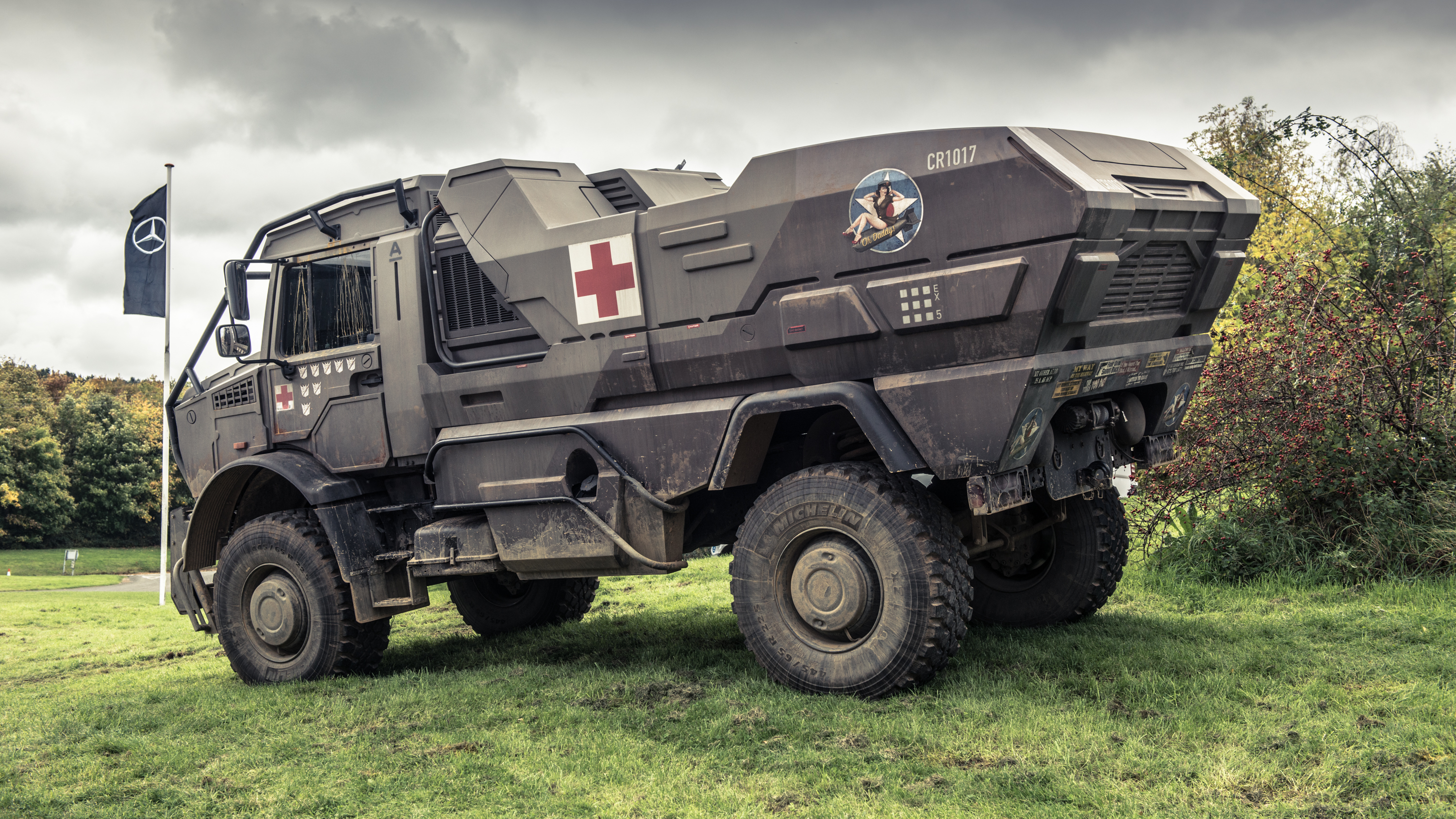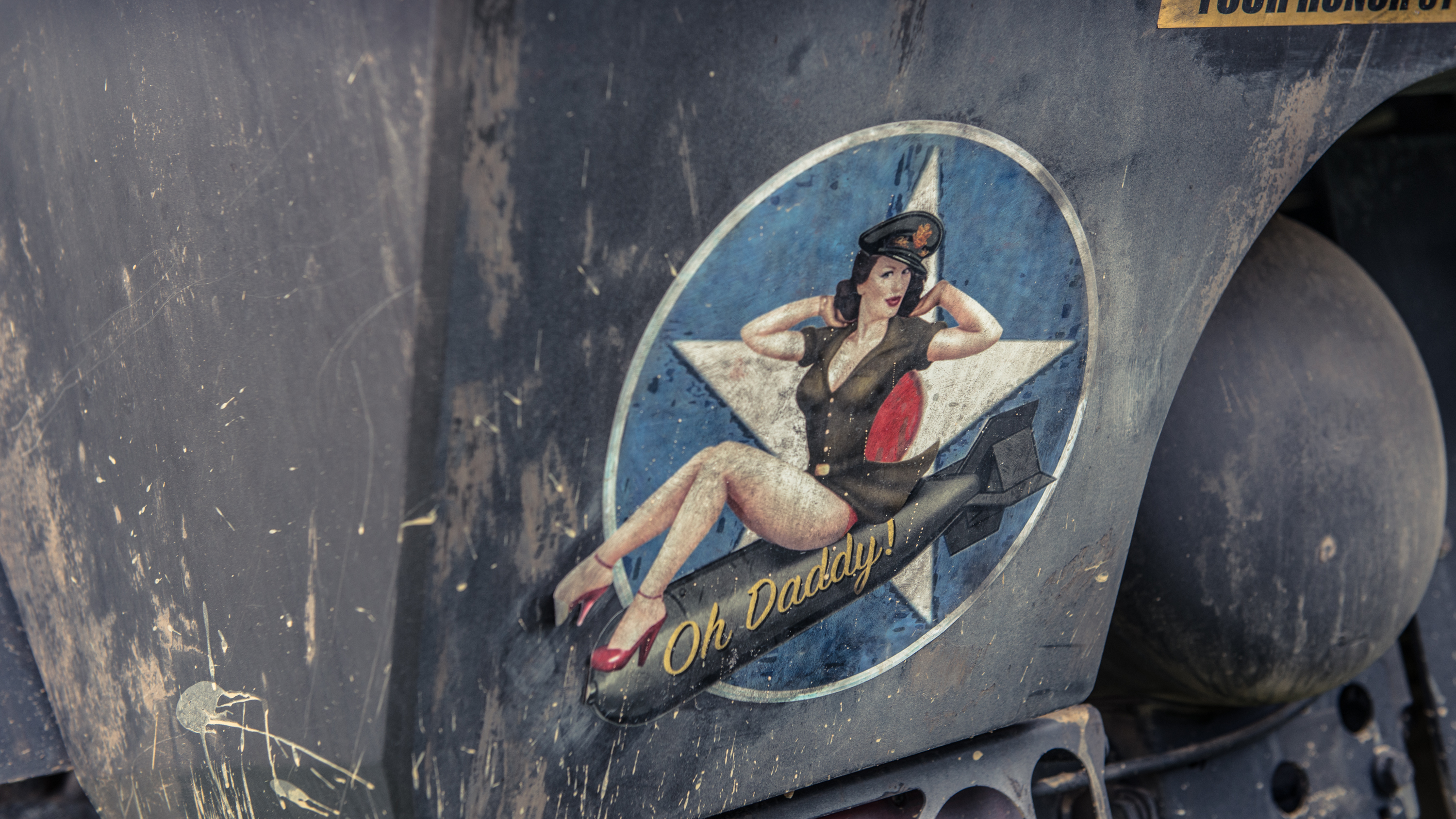
Is the Unimog the only vehicle you'll ever need?
We drive Germany’s apocalypse-proof uber off-roader to prove that it's the ultimate polymath
'What do you want to be when you grow up?'
It’s a common question you’re asked as a kid. Admittedly, a tricky one. But we’ve found an answer that negates the need to try every outfit on in the fancy dress box, a week of awkward work experience and even a career advisor; it’s the Universal-Motor-Gerät, or Unimog to you and me.
See, the humble Unimog is the one and only vehicle in the world that allows you to do ALL THE JOBS. For the last 70 years, these ladder-framed mannequins have been dressed up in all kinds of pragmatic clobber to allow everyone from farmers to the Special Forces to throw them at any terrain, in any weather condition, on any gradient to simply get the job done.
Words and photography: Rowan Horncastle
If utilitarian vehicles aren’t your chosen Mastermind subject, the Unimog is a tractor-cum-pickup-cum-sports-lorry that can be transformed into pretty much whatever the hell you want.
Seriously, how many vehicles do you know that can morph from a watering can, into a giant Armco-cleaning toothbrush, then a fire engine, snow plough, muck spreader, crane, train, lawnmower and Hollywood superstar all through loosening a couple of bolts and disconnecting a few hydraulic hoses? With versatility like this, it’s pretty much the four-wheeled lovechild of a Swiss Army knife and Thunderbird Two.
Unimogs have been putting polymaths to shame since 1946. After the Second World War, Germany’s future as a global power was unknown. With the distinct possibility of becoming an agrarian state by being stripped of its arms industry through the Morgenthau Plan, engineers were unsure how to best use their smarts.
One of these engineers was Albert Friedrich, the former head of aircraft engine design at Daimler-Benz AG. He wanted to design a vehicle that out tractor’d tractors but also had the functionality to overcome multiple tasks.
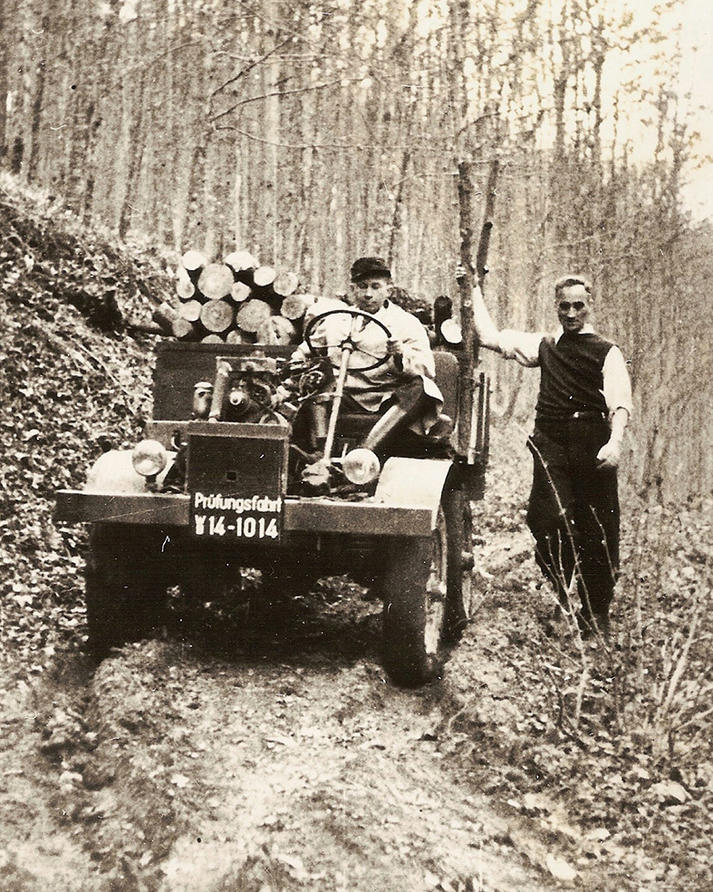
Bamboozled, Albert brought his former colleague Heinrich Rössler on board to come up with a concept. They bashed their heads together until utilitarian engineering genius spilt out in the form of principles that hold true to modern day Unimogs; four wheels of equal size, four-wheel drive with front and rear differential locks, all-terrain portal axles, front and rear power take-offs (for a great variety of attached and mounted implements) and a small platform for carrying loads and equipment.
The first prototype was built in 1946, and when people saw it, they stood agog at this other-worldly big-wheeled beast. With 25bhp, a top speed of 50 km/h, coil-sprung axles with – wait for it – damping, a two-seater cab with a folding roof, fold-down windscreen, padded seats, heating, plus an advantageous weight distribution for difficult terrain (two thirds on the front axle, one third on the rear, it was nothing short of futuristic. At its first agricultural show in 1948, 150 people coughed up orders for them, starting a 70-year production run that’s now nearing half a million units.
Yes, nearly half a million Unimogs have graced planet Earth. Yet you never, ever see them. When, in fact, there are more Unimogs in the UK than the Focus RS. Like an automotive Sasquatch or vampire, they only operate in the depths of night or in the remotest of places, buried in dense forests cutting down trees, underground cleaning tunnels or sewers, or chugging along on the nation’s 10,274 miles of railway.
So it’s probably not hard to gauge my child-like excitement as I rocked up to a car park in the middle of England to find a hive of them circled around like they were at some sort of utilitarian watering hole. Then I was thrown the keys.
Top Gear
Newsletter
Thank you for subscribing to our newsletter. Look out for your regular round-up of news, reviews and offers in your inbox.
Get all the latest news, reviews and exclusives, direct to your inbox.
First, here’s a fast and dirty Unimog spotter’s guide for you. There are two main body styles; a smaller ‘mog that does lots of implement-y things, then a High Mobility Unit (codenamed UHE) that’s an extreme off-roader that doesn’t have implements, but can carry a load of any sort (disaster relief/generators/a lifetime supply of Dairylea Dunkers) anywhere in the world, on any surface. It can even be chucked out of a plane.
These models are then recategorised further by the series number that signifies its weight capacity. This goes from 200 through to 500 Series and from 10 to 16 and a half tonnes. The second two digits of the model number indicate the horsepower. And from there you have over 1,000 permutations of Unimog you can build thanks to all the implements.
Right, lecture over. What are they actually like to drive? Well, the proportions alone make you feel infantile. As they’re nearly 10 feet tall, you have to climb hand over hand and summit into the cabin before hopping into the overly sprung seat.
It’s a simple cockpit (especially in the UHE which comes with a porthole in the roof for extraction or to house a massive machine gun) primarily because the steering wheel, instrument panel and pedal cluster can be changed from left- to right-hand drive on a whim. But – most excitingly – there’s a ball knob steering wheel to wind in and out monstrous amounts of steering lock.
Firing the 286bhp straight-six diesel into life, you worry there’s not enough grunt to get the goliath rolling. But with the release of the satisfyingly stubby nub of a handbrake, a prod of the accelerator (coughing a hefty black plume out of the vertical stack exhaust), it’s time to find out.

You twist the right-hand stalk into drive (in the same way you’d put some Mercedes Benz wipers on) and the masses of torque (811lb ft) shunt, hop and jiggle the ’Mog into movement before munching through the gears. All 16 of them.
That’s what you get as standard. But, if you really love gears, you can get techy by speccing additional crawler or working gears, a torque converter (so you can pull up to 1,000 tonnes along rails) and hydrostatic drive for infinitely variable speeds up to 25 km/h. That’s good for all you ploughers out there. So, in reality, there’s a maximum of 24 forward ratios, and 24 reverse. That enough gears for ya?
But the way these gears change is an event in itself. If you’re used to the lightning magic of Porsche’s PDK or a decent ZF automatic gearbox, swapping cogs in a ‘mog is like going back to the Ice Age. When a new gear is required, it feels like a strongman is running around the gearbox moving atlas stones of ratios into place; the clutch disengages, you rock back, wait a few seconds for him to do his work, then jolt forward as the clutch kicks back in. But, with the ratios so closely stacked, this happens every few seconds.
With a wading depth of 1.2 metres, onboard tyre pressurisation and enough ground clearance thanks to portal axles (where the axle tube is above the centre of the wheel hub) you can maraud around with utter indestructibility. Luckily, I had a mucky off-road parkour area to play in.
Because you see big wheels and tyres you’re led into falsely assuming that it’d ride well over rough terrain. It doesn’t. Even the smallest pimples and divets have it swaying like a ferry in a storm so being smooth on the accelerator is tricky as you stutter bouncing on the viciously well-sprung seat which yo-yos your foot up and down on the accelerator like you’re a thrash metal drummer. Smoothness requires a double-jointed ankle. And at least three tonnes in the back to make the springs and dampers work effectively.
Momentum is the first rule of off-roading to prevent getting stuck. Yet, weirdly, the Unimog doesn’t rely on momentum. Instead, all the trick computers work out the gearing and torque distribution to keep it rolling. The fact you have so much torque, low gear, diff locks and monster tyres pretty much means it can bury itself out of anything.
Being so bloody vast, you’d think it’d be a nightmare to place. But visibility is impeccable. The view from behind the wheels is like looking out of a trendy aspherical fish tank. It’s a full panoramic view and there’s an assortment of mirrors and cameras to counter the blindspots. It's actually easier to manoeuvre than some overly designed city cars.
Charging across the mud, I just aim for scary-looking scenery to see if it’ll be able to handle it. It's a futile exercise. Largely because the chassis moves around underneath the body, as it's fixed in three points, but articulated at the front one. This allows the body and the chassis to roll independently of one another, allowing for massive articulation and for it to pop a wheel in the air. Then there are the favourable approach, departure, and break over angles.
But surely it can’t beat gravity, right? Intrigued, I nestle up to a muddy 1 in 1 decline. Weighing many, many tonnes, surely it’ll just slide down like a Jamaican bobsleigh? Step forward the Unimog party trick: the engine brake.
With a click down of the gear stalk, a butterfly valve on the exhaust closes – chocking the engine's exhaust flow, therefore slowing the monster down allowing for accurate slow-speed decent and no risk of the wheels locking up. There are two engine brake speeds so you can use it during normal driving so each time you come off the throttle the valve shuts so you don’t have to rely on the brakes – saving wear – and also making it easier to bring big loads to a halt.
More than being a go-anywhere apocalypse-proof bit of machinery that can do everything, the Unimog is magic because it shrinks you down into feeling like a kid again. As soon as you cast eyes on it, you're teleported back to your first Tonka toy. This one you can drive instead of sit on... then cut the hedges, throw poo around a field, save lives, put out fires, be a train, counter-terrorist unit, grit roads or water your local pub’s hanging baskets. The options are literally endless and that’s why it’s brilliant.
Saying that, if I had to take one away, it'd be Hound from the Transformers movie (below). It’s just perfect for the post-apocalyptic run to IKEA, the dry-cleaners or zombie farmers’ market. Something that may be all too real in the near future.







